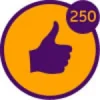can't see food on his plate


Last night my husband was eating dinner but the food on the left side of his plate fell off the plate onto the table. I guess it was pushed off by mistake. This has happened alot lately. I told him but he could not see it. I went over and pointed to it but he still couldn't see it or my hand. I pushed it back to the middle of his plate and he saw it. I've noticed that he doesn't see the food that's been pushed to the side so I've been pushing it back to the middle and he says "oh I didn't see that",
I'm not sure what is going on but it's always the left side. He's been to the eye dr over the past few years but his eyes are fine.
Now that I'm writing this I'm remembering my sister said the other day he gets into the chair easier if he goes from the right, My sister hasn't seen him in months but we spent a few days together over the weekend. so not sure why I never figured that out.
We have a dr appointment with the neurologist on Thursday but wondering if anyone else has experienced this.
Comments
-
-
My DH is very compromised at stage 6. To seat him (at a table or island), I have to guide him to the right of a chair (or stool). He backs into the seat and then swings his legs under the table. I have to then shimmy the table closer to him as he can no longer figure out how to bring himself closer to the table (otherwise he drops food down into his lap). He is right handed, so I have clear plastic, flexible half circle plate guards that clip onto the left rim of a round dinner plate. (The guard helps keep food on the plate when he scoops.) Usually, I guide his hand to the food and sit katty corner on his left and push the food into place throughout the meal. I typically end up feeding him the last remnants of a meal. When he sits on the sofa, or any stand alone chair, I have to face him toward the seat, he then “twirls” a half circle to the left and sits down.
Until I read your post, I was not fully aware of the routines I follow to get simple things accomplished. But the “movement memory” associated with every activity is so ingrained by now, that if it gets out of order, we usually have to start again. One more idiosyncrasy of this disease. By now, it’s second nature. Maybe your neurologist will have more insight for you. Good luck!
0 -
June45, thank you for posting this. I am going to send it to my kids so they also understand what is happening.
Beachfan, thanks for all the advice. I am going to look into those flexible plate guards. It sounds like they would be a big help.
0 -
The term for seeing half of a visual field is hemoanopsia. This could be due to a stroke or other type of brain damage, such as posterior cortical atrophy. Ask the neurologist about this.
Iris
0 -
They can also develop tunnel vision - seeing only what's directly in front of them. I remember I'd ask Charles to hand me something and if it wasn't directly in his field of vision, he didn't see it. We adapt to whatever we have to do to get things done and don't think much about it - things that make a good caregiver. Those plate guard sound like a really good idea - never used those but Charles didn't seem to have that problem.0
-
Caberr,
My EOAD husband also has trouble seeing what's in front of him. His occipital lobe is damaged per a PET scan. The occipital lobe is the visual processing center of the brain.
0 -
Just an update.We went to the neurologist today. She is ordering another MRI just to be certain nothing else is going on. He will see an eye dr she recommended to be sure as well. She is getting PT for his collar bone he broke in March, OT and another therapy to come to the house to see what he needs. Boy was I glad she said they will come to the house!
Dr said June 8th is the day the new ALZ drug will hopefully be approved. I don't remember the name of the drug. She has him on her list as a possible recipient.
Thanks all
0 -
One thing I am always aware of is having color contrast between the food & the plat and between food groups. For example, if I put mashed potatoes on a white plate DW can not distinguish between the food and the plate. Also if I serve two food groups that are the same color DW can’t distinguish between the two food types. I find very colorful meals work best.0
Commonly Used Abbreviations
DH = Dear Husband
DW= Dear Wife, Darling Wife
LO = Loved One
ES = Early Stage
EO = Early Onset
FTD = Frontotemporal Dementia
VD = Vascular Dementia
MC = Memory Care
AL = Assisted Living
POA = Power of Attorney
Read more
Categories
- All Categories
- 596 Living With Alzheimer's or Dementia
- 321 I Am Living With Alzheimer's or Other Dementia
- 275 I Am Living With Younger Onset Alzheimer's
- 16.9K Supporting Someone Living with Dementia
- 5.6K I Am a Caregiver (General Topics)
- 8.2K Caring For a Spouse or Partner
- 2.7K Caring for a Parent
- 225 Caring Long Distance
- 156 Supporting Those Who Have Lost Someone
- 17 Discusiones en Español
- 5 Vivir con Alzheimer u Otra Demencia
- 4 Vivo con Alzheimer u Otra Demencia
- 1 Vivo con Alzheimer de Inicio Más Joven
- 12 Prestación de Cuidado
- 3 Soy Cuidador (Temas Generales)
- 8 Cuidar de un Padre
- 23 ALZConnected Resources
- View Discussions For People Living with Dementia
- View Discussions for Caregivers
- Discusiones en Español
- Browse All Discussions
- Dementia Resources
- 8 Account Assistance
- 15 Help









